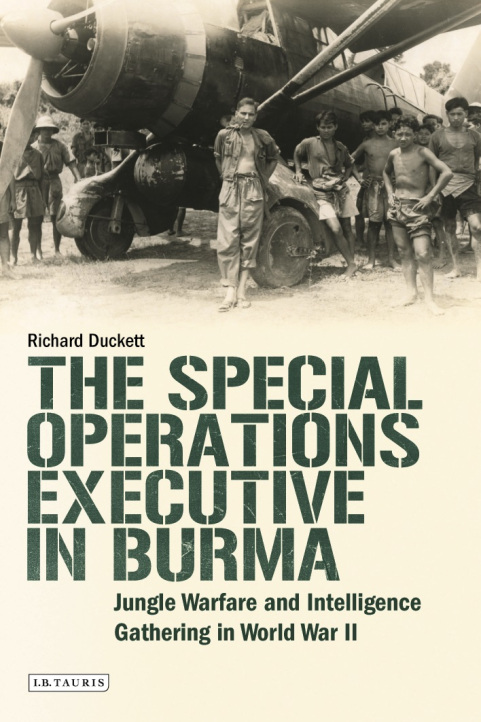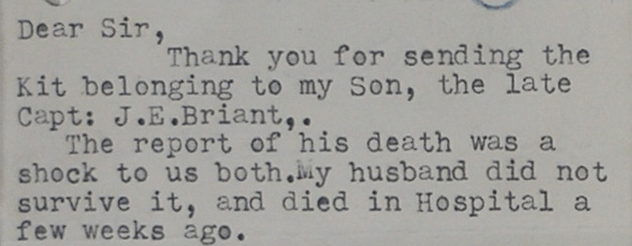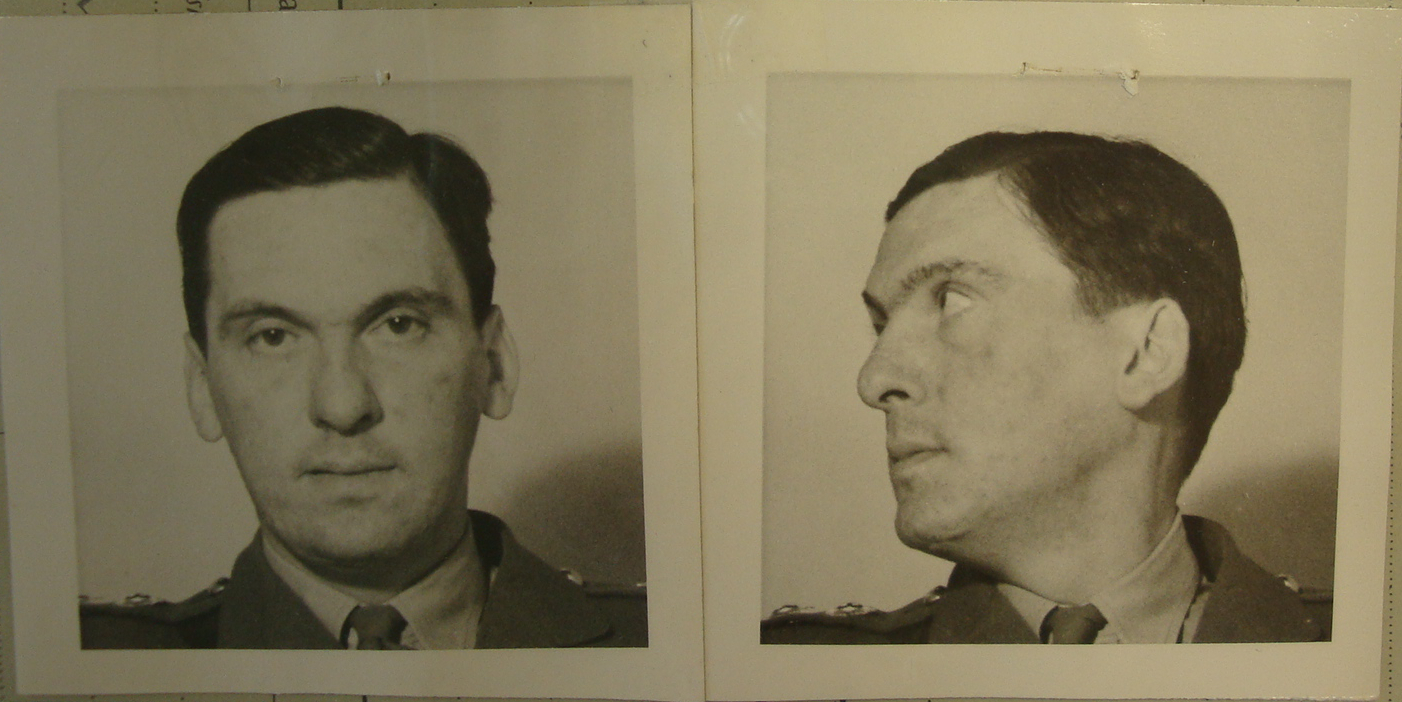
Like what you see?
Consider a small donation to keep the website going?
£1.00
During 1945, SOE’s Burma Country Section (BCS) kept a count of casualties inflicted upon the Japanese. Perhaps as grim humour, or perhaps as a reflection of the British upper class penchant for shooting, the record was known as ‘The Game Book’. It also recorded the number of deaths suffered by BCS. In short, BCS reckoned that their Force 136 teams in Burma accounted for 16,279 Japanese for 53 of their own. While these statistics might seem impressive, numbers are impersonal. Who were the people who made the ultimate sacrifice? We will probably never know anything about the individual Japanese soldiers, but some of the 53 on the Allied side can be transformed from a mere statistic, and remembered here.
Other SOE men, who were not killed in operations during 1945 – and therefore not part of the statistic above – are included here. In all, a short biography of fifteen men follows. The cause of death varies. One drowned; one died of wounds from an explosives accident; two were killed on take-off for operations while two more were killed in an aircraft crash after the end of hostilities; one was shot by Thai soldiers; two died of disease; four were KIA against Japanese soldiers; two died due to parachute failure: all died for the same cause.

Original Picture Credit via ‘Legion‘, Canada’s Military History Magazine
Captain Jean Paul Archambault:
A French Canadian from Montreal, Archambault was born 13 November 1908. He worked for the Postal Service from 1928, enlisting in the Canadian Army from the Postal Corps in 1942. Recruited by SOE for operations in France, Archambault was trained during 1944. Several of his instructors’ reports survive in his personnel file (PF), giving rather a bleak appraisal of his leadership skills and recommending him as a W/T man.
In April 1944, Archambault was parachuted into France to prepare for D-Day in the Saone-et-Loire region. Here, ‘due to his own initiative and leadership’ the Germans were unable to use the St. Rembert railway due to over 40 acts of sabotage and guerrilla attacks on German forces. For this, Archambault was awarded the MC.
After Christmas leave in Canada, Archambault was shipped out to the Far East where he arrived in February 1945. He parachuted into Burma in April 1945, joining Lt.Col. Peacock’s Otter team of Operation Character. On 19 May, Archambault died of wounds sustained while preparing demolitions two days earlier.

Capt. John Ernest Briant:
Born 29 November 1923 in India, Briant was granted an emergency commission into the 8 Gurkha Rifles in May 1943. After serving with the Chin Levies in northern Burma, Briant was recruited into SOE in December 1944. In 1945, Briant was deployed on operations in southern Burma, codenamed Nutshell team Antelope.
On 1 August 1945, Briant was shot dead by the Japanese who had surrounded a hut where he and his guide, Tun Yung, were hiding. Tun Yung (or Yon) was captured and tortured, after which it is alleged that the Japanese bayoneted and buried him alive. It was believed that Capt. Briant had been betrayed; the suspect was caught and handed over to 63 Infantry Brigade of 17 Division for investigation.

Captain David John Charles Britton:
Born 13 August 1912 in Hurst, Berkshire, and educated at the Queen Elizabeth Grammar School, Dorset. Captain Britton was married with two children, Peter and Michael. Britton joined SOE in November 1943; his parent regiment was the Royal Artillery. Before leaving for the Far East in December 1944, Britton had served in France on the Albert circuit.
After training in Ceylon, Britton was deployed in Burma as part of Operation Nation, in charge of team Reindeer. Britton was KIA 3 June 1945:
‘The village was again mortared. Meanwhile Capt BRITTON was engaging the force of Japs who were inn very thick country. He succeeded in driving them out of a small village and they retired to the cover of a large clump of trees. Here they prepared to stand. Capt. BRITTON led his men fwd through country in which visibility is barely 20 yds. He himself was using the Bren, firing mostly from the standing posn, and all the time leading his men fwd with great dash and complete disregard of personal safety. His example and courage were beyond the highest praise. After personally knocking out at least one Jap LMG he advanced across a small clearing, but a concealed Jap MG opened up. He was hit and went down – the bullet penetrated his right lung and passed out of his neck just above the left shoulder. Some of the men tried to get his body back but the Jap fire was h[eav]y. One man got close to try to get a water bottle across but Capt BRITTON could not speak or move and was probably already dead.’
Chang Shen:
Chang Shen was one of a group of Chinese agents supplied to SOE by the Kuomintang in 1943. He is recorded as having completed a thirteen month Special Service Training course in China before being flown to Calcutta for SOE operations. He spoke six languages: Mandarin, Cantonese, Foochow, English, Burmese and Hindustani.
On 27 October 1944, Chang Shen was dropped over Burma for an operation codenamed Wakering in the Pegu area, but his parachute failed to open.
Chen Yuan Chuan:
Like Chang Shen (above), Chen Yuan Chen was one of the Chinese agents sent by Nationalist China in September 1943. Born in 1921, he was described during training as ‘[A]lert and intelligent’, and later by Major Manford as ‘a bit of a smart Alec’.
Chen Yuan Chuan was Chang Shen’s W/T operator for Operation Wakering in the Pegu area of Burma. His parachute also malfunctioned.

Sergeant Peter McLeod Colvin:
Born in Watford on 27 April 1923, Colvin joined SOE in 1943. He had been serving as a Lance Corporal in 112 Royal Armoured Corps (Sherwood Foresters). In July 1944, Colvin parachuted into the Cotes du Nord region of France where he was MiD and awarded the Croix de Guerre for his work with the French Resistance.
After France, Colvin was shipped out preparatory to a second operation in Europe, but when it was cancelled, he volunteered to go to the Far East.
Sgt. Colvin was the W/T operator for team Hart of Operation Nation. On the night of 1 April 1945, his aircraft took off from Jessore to deploy the team, but burst into flames and crashed killing all on board.

Captain Basil Sheridan Hamilton-Temple-Blackwood, 4th Marquis of Dufferin:
Captain Hamilton-Temple-Blackwood was born on 6 April 1909, and educated at Eton and Oxford. Before the war, he had served as Under Secretary of State for the Colonies, 1937 to 1940. He was commissioned in the Royal Horse Guards in 1940 and then he joined SOE in September 1944. He left the UK for India in October 1944.
The Marquis was killed in action in Burma on 25 March 1945. He was serving as officer commanding No.2 Indian Field Broadcasting Unit (IFBU). The IFBUs were forward propaganda units who set up loud speakers within ear-shot of the Japanese, attempting to coax them into surrendering by broadcasting to them in Japanese. Lord Dufferin was hit in the chest by Japanese fire, probably through the lung and heart. Attempts to recover his body were unsuccessful, and it was thought that the Japanese buried him.
Second Lieutenant Samuel M. Little:
Born 24 June 1918, Little joined the Gordon Highlanders in July 1939. He achieved the rank of Sergeant and later, due to his ‘outstanding qualities of leadership, he was commissioned with effect from 1 April 1945.
He was in the field on Operation Character serving with Hyena group from February until August or early September 1945. He was on Dakota ‘J’ for Jig which crashed in the Karen Hills on 7 September.

Captain Ronald John Meredith:
Born in Chile on 3 April 1913, Captain Meredith left Chile in 1940 to join the Army in the UK. From July 1940 to February 1941 he served in the ranks with the Royal Scots. From February to May 1941 he completed officer training and was then commissioned into the Lancashire Fusiliers. Before volunteering for war service, Meredith was employed as a company secretary, and had served two years ‘in Anti-revolutionary Militia’ in Chile.
An MI5 trace shows that Meredith was picked up by SOE in July 1941, initially to be employed as an instructor. Meredith went on operations in January 1945 as part of Operation Label team Rat. He was killed on 26 January when the Japanese attacked the monastery where the team was hiding up. Lt.Col. Maddox investigated the death of Meredith in January 1946, and reported that:
‘The British party scattered, leaving all they had, and it was then that Capt. Meredith was believed wounded and later found dead in a sitting position leaning against a clump of bamboo about 100 yards North West of the monastery. The villagers found him with an empty carbine in his hand and a shot through his forehead.’
Corporal Frederick Sawyer:
Sawyer was born in North Bow, London, 7 July 1911. Before the war he was a clerk working in the London Chamber of Commerce. In April 1941 he was sent to Singapore as part of SOE’s Oriental Mission, employed as a clerk. Corporal Sawyer drowned on 12 June 1942 when attempting to escape to India from Burma:
‘After travelling hard for some 30 days we had to cross several deep mountain torrents, one of which was extremely difficult. The only way to cross was over fallen trees which bridged the rocky swift river. Each member of the party in front and behind helped the man in between. Just when we were all practically across and only a short way to go, your husband slipped, was unable to regain his balance and fell into the the river when he was quickly washed away.’

Captain Ronald Charles Shearn:
Born to a British father and French mother in Marseilles on 9 July 1924, Shearn and his family escaped to Oran after the defeat of France in 1940. He was a student in Algiers and later back in Marseilles, before making his way to Britain by 17 January 1944. He had been accepted for service in the RAF when SOE picked him up. After interrogation established his bona fides, Shearn was trained at various SOE schools, where his finishing reports described him as ‘thoroughly 27 in outlook.’ The number ’27’ referred to France.
Training complete, Shearn was sent into France on 8 August 1944. His job, in the Dreux area, was to find up to 25 agents to make their way to Allied lines where they would report German dispositions. His alias for this operation was Rene Sarront. After this mission was successfully completed, Shearn was shipped out to the Far East. He was parachuted into Burma on 26 March 1945, joining Operation Heavy, team Lynx. He was killed in action leading an attack against twenty pro-Japanese Thai troops in Mongton Monastery. Shot in the wrist and stomach, he died of wounds on 4 May.
Sergeant Alfred Claude Brinton Sowden:
Born in Truro, Cornwall on 12 March 1918, Sowden was a W/T sergeant who completed two operations as a Jedburgh. His first operation was in France where he deployed in civilian clothes to ‘an area thick with German troops and Gestapo.’ He was recommended for the British Empire Medal for his coolness under pressure, but was awarded the Military Medal in July 1945.
Sowden was then posted to the Far East where he was sent into Burma on Operation Character with team Hyena from 20 February 1945.
On 7 September, Sowden was on the Dakota ‘J for Jig’ which went down in the Karen Hills killing all sixteen on board.
Lance Naik Tin Nyunt:
A Burman recruited in August 1943, Tin Nyunt was trained as a W/T operator and was first deployed in Arakan in September 1944. This short first mission ended on 10 October, and after advanced W/T training Tin Nyunt was parachuted back into Burma as Donkey. Hiding in Rangoon, Tin Nyunt provided intelligence from the capital, and provided a direct link between SOE and Burmese nationalists. He died of malaria in the field on 18 May 1945.
Tun Shwe I:
A Karen who joined the Burma Army Signals in October 1940 and worked at the permanent W/T station based in Maymyo. After retreating to India, Tun Shwe joined SOE in October 1942, and after training was parachuted into Burma as part of the initial Harlington team. After his arrest and incarceration in Rangoon, he apparently died in May 1944 from ‘malaria and paralysis.’
Captain Peter Charles Henry Vickery:
Born in London on 19 December 1920, Captain Vickery was 24 when he died. Before joining SOE, he was serving with GHQ Liaison Regiment of the Royal Armoured Corps (RAC). He joined SOE as a Jedburgh in January 1944.
His personnel file lists him as being away (overseas) from the UK on the following dates:
- 20 September 1944 – 1 October 1944
- 3 October 1944 – 21 November 1944
- 28 November 1944 – ?
- Left for India 12 March 1945
It is not clear whether he was on operations for all of these absences, but a battle casualty report records that he received a shrapnel wound at Nijmejen, so presumably he was deployed in support of Operation Market Garden in September. His Jed team consisted of an American, Sergeant Beynon, and a Dutch Captain, Bestebrutje; they were codenamed Stanley.
Captain Vickery took off from Jessore on 1 April 1945 to parachute into Burma as team Hart of Operation Nation with Captain Marchant and Sergeant Colvin. The plane exploded on take off killing all on board. He is buried in Chittagong cemetery, India.
If you like what you see on my website consider buying my book HERE

Like what you see?
Consider a small donation to keep the website going?
£1.00

Leave a comment